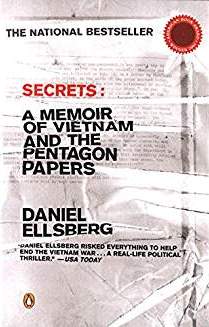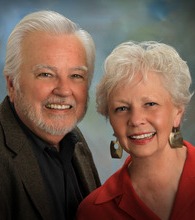Döstädning: The Gentle Art of Swedish Death Cleaning
So when we were invited to spend the evening and have lentil kashuri, a traditional Egyptian dish with rice beneath and caramelized onions on top, we greatly enjoyed the interaction with our own age-set. These two couples have lived and traveled the world, one husband was the international director of a large, historic missions organization. Our getting-acquainted conversation was rich—and we all looked back on decades that had been spent in significant ways serving the Lord. We three wives left the table, expecting our husbands to join us, sat in the living room and listened to the sounds of the men from the dining room—two hours of engaged conversation, punctuated by much laughter. I’m telling them I’m adding them to my “finding friends our age” list. One common area of discussion was the downsizing discussion; in our seventies and eighties, we are all in the process of making end-of-life decisions, and we’re all preparing ourselves in the near future to move from our homes, sell them or pass them along to adult children, and settle into smaller condos, retirement villages, or as in our case, move into the in-law apartment in our daughter and son-in-law’s home.
We have four bedrooms, two attics, two studies, one furnished basement, kitchen, living room, dining room, laundry room and a garage—all of which need to be downsized, cleared, purged, given away, sold or discarded. So I ordered The Gentle Art of Swedish Death Cleaning by Margareta Magnusson, about a national custom of clearing out material possessions and not leaving it for your children or friends or extended family to do after you become too disabled. Technically, this is called “döstägning”; dö is “death” and stägning is cleaning. Magnusson says she is “somewhere between 80 and 100 years of age.” I think I will begin telling people I am somewhere between 70 and 90. I found the book to be thin in content, though the concept is interesting; probably everything I needed to know about this Swedish tradition could have been researched on the Internet without purchasing the book (everything but “somewhere between 80 and 100”). However, it has set me on a path to designing a deliberate plan, while we are still healthy and functioning in an organized and deliberate fashion, to do my own “death cleaning” so that by next spring we will have diminished our possessions as much as possible.
Here is the start of my plan: First, I will write a letter and invite all my adult grandchildren (there are six of them) and their spouses to sign up sometime between this year and next for a purging visit. Now that they almost all married, there may be possessions of ours they’d like to have for their own small apartments (or save in storage for future homes). We do need help, but this is more a matter of creating a time of connection with each couple in order to have the conversations about family origin, to laugh and spend a few days with nothing more than sharing the work and caring about each other. The next step is to establish a master schedule. Most of the furniture we are going to take with us to Turtle Creek Acres has been moved there. A library/study has been arranged for David in the loft area above the apartment (the Timberlake home is a converted barn house on 18 acres of mostly protected marshland). Probably the next best step is to tackle the attic and garage. Magnusson sold her home with her beloved garden to move into a more manageable apartment, and she left all her gardening tools and equipment for the delighted new owners. Great idea, but everything needs badly to be purged and ordered. However, as I was reading The Gentle Art of Swedish Death Cleaning, I realized there was a whole area of downsizing and clearing out the author never considered—the gentle art of seriously cleaning out the interior life. David and I are beginning these discussions with the question: Do we have any regrets? He appears at first look to not have any, while I think I have a few. This March 22 and 24, Hungry Souls is offering two 8-hour retreats, particularly designed as opportunities for another type of purging, Spring Cleaning for the Soul. The details and the registration form are in the NOTICES section. The time is from 9:00 to 5:00. In a planning session recently, one of my co-workers nixed putting anything the weekend before Easter. “That,” she said, “is the worst time to plan an event.” That gave me pause, because Spring Cleaning for the Soul is planned for the weekend before an early Easter. Then, that inner nudge, No. This is exactly the right time to ready a soul for Easter—a döstäning of a spiritual kind. For those of you who know you need to do soul-work—purging resentments, listening to and obeying the voice that says you need to forgive yourself and others, confessing old errors and facing regrets, then asking for God to set you free from the accumulation of old junk—and keep putting off getting started, This Is Exactly the Day You Need to Set Apart on Your Calendar. David
and I have five decades of marriage and ministry behind us; we
specialize in soul care, and Doug and Melissa Timberlake are both
highly trained life coaches working with executive teams as well as
with individuals. We are looking forward to touching your life and
being touched by yours. NOTICESSpring Cleaning for the Soul |
 Karen Mains This is more a matter
of creating a time of connection with each couple in order to have the
conversations about family origin, to laugh and spend a few days with
nothing more than sharing the work and caring about each other.
BOOK CORNER
 Secrets: A Memoir of Vietnam and the Pentagon Papers by Daniel Ellsberg
However—however, we had questions, and the current film’s emphasis on Ellsberg’s efforts to release as an act of patriotic heroism top-secret papers—made David and I realize we didn’t really know what had happened to Daniel Ellsberg in the intervening years, so I ordered a copy from Amazon. Wow!—talk about corruption. The teaser on USA Today's front cover captures well the drama and, in retrospect, the historical intervention of one man: “Daniel Ellsberg risked everything to help end the Vietnam War … a real-life political thriller.” Indeed it is. The simple biographical facts are these: “Ellsberg graduated from Harvard, served as a company commander in the Marine Corps, then completed a doctorate in economics again at Harvard. In 1995 he joined the Rand Corporation’s Economics Department as an analyst, and in 1964 he was recruited to serve in the Pentagon under Secretary of Defense Robert McNamara. Following two years in Vietnam for the State Department, Ellsberg eventually returned to Rand. In 1971 he made headlines around the world when he released the Pentagon Papers.” Those papers, in case you forgot or didn’t know, were top-secret. Because of his previous work, Ellsberg had security clearance, and interestingly, his specialty in economics was determining how best to prevent a nuclear holocaust. “I chose to specialize in a subject that seemed up to this point understudied in relation to its importance, the command and control of nuclear retaliatory forces by senior military officers and especially by the president.” Rand is a nonprofit research group whose main focus was on the military aspects of the Cold War. During his two years in Vietnam, he came to the conclusion that despite White House reports to the contrary, the U.S. was losing the war and could not, even with increased bombing and more fighting personnel on the ground, ever win it. The discovery of the Pentagon Papers, a Vietnam War research project conducted by War Secretary Bob McNamara, showed that four presidents had lied in varying but cumulative ways to the American people and to Congress about the ground realities in Vietnam, and that Johnson and Nixon, even knowing they could not win, continued to escalate the war to the cost of billions of U.S. dollars, 55,000 American lives, not to mention the hundreds of thousands of Vietnamese military and civilians who died, and the denuding of jungles and villages and acres in Vietnam, Laos and Cambodia. The gripping questions at the crux of this book is: Is it worth risking everything—loss of reputation and position, a life prison sentence, the public brand of traitor, which might carry on into history—in order to make the evidence of the truth known? Would the reader risk everything? This is the extraordinary story of the crucible that existed (assuredly still exists) in the making of an American hero. Are you slightly disillusioned these days? Often infuriated by the press as I am (save for PBS and BBC)? Disheartened by the tone of discourse, terrified for the future of the country? I guarantee this is one book that will make you proud again. It will renew your determination not to let the American ideal die (we are, after all, as many have proposed, first and foremost, an extraordinary idea) and to become an activist to preserve our future in whatever way you can. Buy, borrow, or take out a
library loan before you forget how remarkable this period in our
American life was or forget the fact that principled people, willing to
make the sacrifice, do make a difference. |





